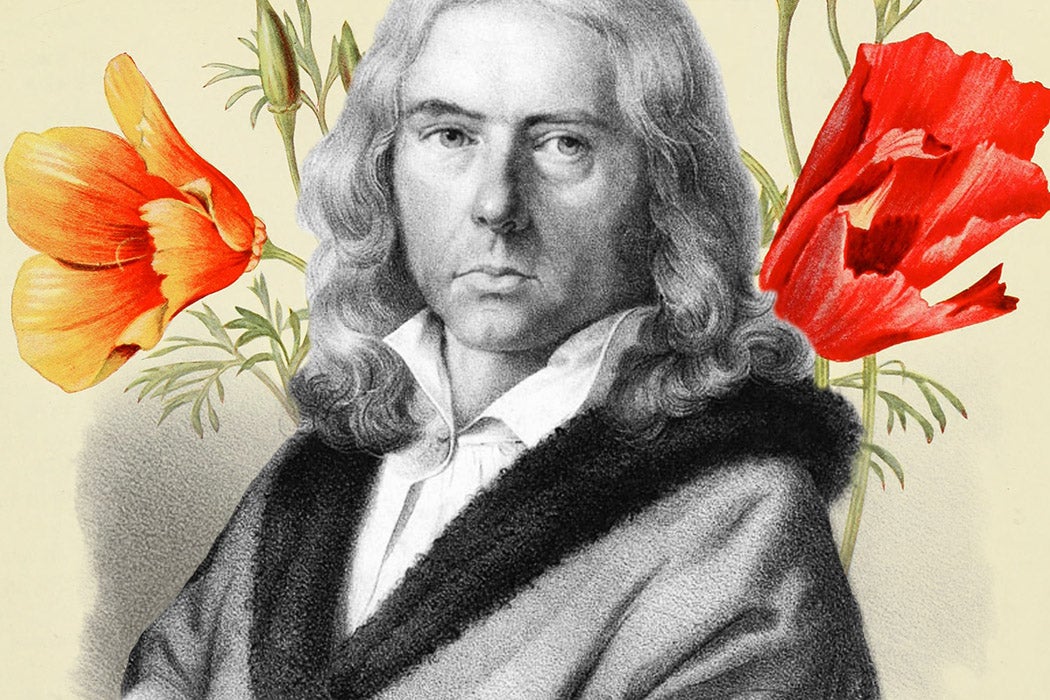Scientific binomials sometimes encode great stories. Take the California Poppy, described in 1820 as Eschscholzia californica by botanist Adelbert von Chamisso. He honored his shipmate Johann Frederich von Eschscholz in the name. Eschscholz in turn named a genus of suncups Camissonia after von Chamisso.
So what were these Germans doing in California? They were officers aboard the Russian exploration ship Rurik. It wasn’t uncommon for the Russians to hire foreigners for such missions—the Rurik’s captain was another German, and, famously, the Bering Strait was named after a Dane working for Moscow.
On its three-year ’round-the-world voyage, the Rurik came into San Fransisco Bay in 1816. Historian Edward Mornin explains that the Rurik’s mission “appears never to have been clearly articulated.” The ship seemed to be scouting for the Northwest Passage as well as showing the Russian flag along the California coast. There, Spanish colonial ambitions from the south abutted Russian colonial ambitions from the north, decades before Americans from the east overran the area.
Von Chamisso had already published his most influential fiction before setting out on the Rurik in 1815. His Peter Schlemihls wundersame Geschichte became an international sensation. In addition to ushering the Yiddish word schlemiel, meaning a fool or bumbler, into the German language, the tale’s haunting story of a man who sells his shadow to the devil for unending riches really hit a nerve.
For a man without a shadow is always in exile from humanity. It doesn’t matter how much money Peter Schlemiel, as his name is usually translated into English, can pull out of his magic purse. The story inspired J. M. Barrie, whose Peter Pan might not exist without it. Hans Christian Andersen riffed on the theme. Jacques Offenbach thought it worthy of The Tales of Hoffmann. Oscar Wilde’s Portrait of Dorian Gray might be said to be a shadow of von Chamisso’s shadow, with the rotting, aging portrait—or is it the unchanging Dorian?—as the lost shadow.
Perhaps more unexpectedly, Karl Marx alluded to the tale in “The Eighteenth Brumaire of Louis Bonaparte,” his 1852 essay on coup d’état and the capitalist state. There, expecting German-language readers to be familiar with the story, he wrote that “Men and events appear as reverse Schlemihls, as shadows that have lost their bodies.”
In the twentieth century, Italo Calvino said that “Peter Schlemiel” was the story he would most have liked to write. A 2004 paint-on-glass animation by Swiss animator Georges Schwizgebel shows the story can still strike as otherworldly and haunting. And very German?
As it turns out, Adelbert von Chamisso wasn’t exactly German. He was born Louis-Charles-Adélaïde de Chamisso in France in 1781. That was a pretty bad year to be a French aristocrat: his family fled the Revolution, and he ended up having to work for a living. This included a childhood gig as a porcelain painter. That detailed work was good practice for his later botanical illustrations.
Weekly Newsletter
Other than this world cruise, he spent most of his life living in Berlin. He mostly wrote in German and became well known as a German poet. Robert Schumann would set his poems to music. As an émigré and honorary German (he served in the Prussian military but never became a citizen), von Chamisso might best be considered a pan-European. As he wrote to Madame de Staël:
I am a Frenchman in Germany and a German in France; a Catholic among the Protestants, Protestant among the Catholics; a philosopher among the religious […], a mundane among the savants, and a pedant to the mundane; Jacobin among the aristocrats, and to the democrats a nobleman […] Nowhere am I at home […]!
Except, perhaps, in science. Darwin himself praised von Chamisso, who died in 1838, as a “justly distinguished naturalist.” Peter Schlemiel himself ultimately comes to accept his shadowless state—as a globe-trotting explorer.
Editor’s Note: An earlier version of this story misspelled Geschichte and Hoffmann.







